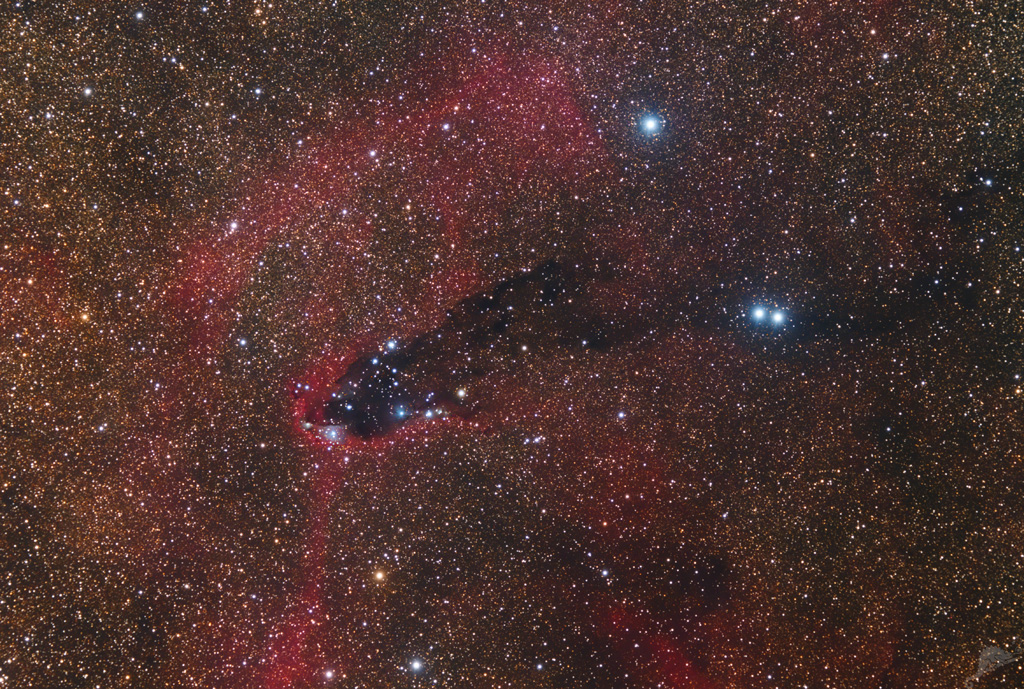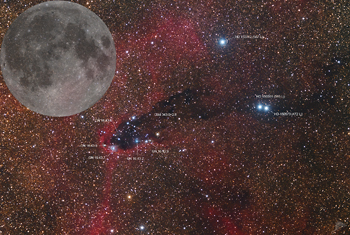 |
CHAMÄLEON + ONJALA OBSERVATORY DeepSky | SITEMAP HOME CHAMÄLEON |
|
 |
|||
| « back to overview Nebula | Load higher resolution (1800 x 1200 Pixel) (3500 x 2300 Pixel) | Object description |

Large, bright-edged nebulae and their more evolved and smaller relatives, the comet-like globes, are fascinating dynamical structures formed by the interplay of cold, dark molecular clouds and hot, blue ionizing stars. In the northern hemisphere, many of these dark clouds were cataloged in the 1920s by E. E. Barnard and later by Beverly Lynds. In the southern sky, such catalogs did not become available until the British Schmidt telescope became operational in the 1970s. The first author of a southern catalog of 1101 dark clouds (1986) was Malcolm Hartley, known for his comet observations. Our image shows DCld 343.0+02.8 from his catalog, which lies in the star-forming region Gum 55 and has the popular name "dark tower".
Typically, the head of the globule faces one or more hot O- and B-type stars. The intense radiation from the stars heats the cold surface of the molecular cloud and releases the hydrogen gas, which condenses on the dust grains. This is immediately ionized by the intense ultraviolet light from the stars, forming a red HII emission nebula. The dust is also blown away by the violent radiation pressure (stellar wind) from the stars, forming a comet-like shape of the molecular cloud. The ionizing stars involved in the formation of the dark tower are members of the open cluster NGC 6231, the center of the Scorpius-OB association, which here lies outside the field of view. In addition to the emission regions, five small reflection nebulae are visible within the globule.
 |
The
distance of the molecular cloud to the solar system is about 5300 light years
and extends over a length of about 40 light years. A wide angle view of Dcld 343+2.8 we show here. An image of the open star cluster NGC 6231, the center of the Scorpius OB1 association here. And an overview mosaic of the complete OB1 association (Gum 55) here. « Click here or the thumbnail to load a large annoted image and a size comparison to the full moon. |
 |
 |
 |
 |
 |
 |
 |
| Sun | Moon | Solar System | DeepSky | Widefield | Miscellaneous | Spec. Projects |